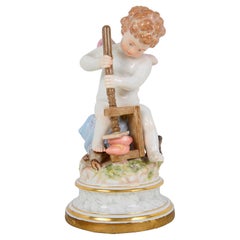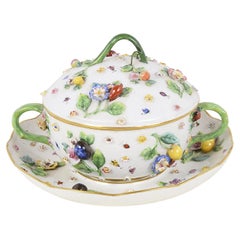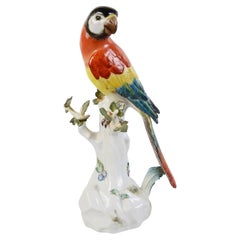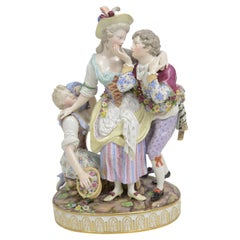Want more images or videos?
Request additional images or videos from the seller
1 of 10
Large 19th Century Meissen Style Nodding Buddha
Price:$3,017.89
About the Item
- Dimensions:Height: 11.82 in (30 cm)Width: 12.21 in (31 cm)Depth: 11.03 in (28 cm)
- Materials and Techniques:
- Place of Origin:
- Period:
- Date of Manufacture:1880
- Condition:Wear consistent with age and use.
- Seller Location:Brighton, GB
- Reference Number:1stDibs: f122721612216260653fs
About the Seller
5.0
Gold Seller
Premium sellers maintaining a 4.3+ rating and 24-hour response times
1stDibs seller since 2015
500 sales on 1stDibs
Associations
LAPADA - The Association of Arts & Antiques Dealers
Authenticity Guarantee
In the unlikely event there’s an issue with an item’s authenticity, contact us within 1 year for a full refund. DetailsMoney-Back Guarantee
If your item is not as described, is damaged in transit, or does not arrive, contact us within 7 days for a full refund. Details24-Hour Cancellation
You have a 24-hour grace period in which to reconsider your purchase, with no questions asked.Vetted Professional Sellers
Our world-class sellers must adhere to strict standards for service and quality, maintaining the integrity of our listings.Price-Match Guarantee
If you find that a seller listed the same item for a lower price elsewhere, we’ll match it.Trusted Global Delivery
Our best-in-class carrier network provides specialized shipping options worldwide, including custom delivery.You May Also Like
Pair 19th Century Meissen Porcelain Chinoiserie Style of Nodding Pagoda Figures
By Meissen Porcelain
Located in New York, NY
A large rare pair of 19th century Meissen Chinoiserie style Nodding Pagoda Figures with Movable Head, Hand and Tongue, known as a "Nodder'. This Unusual...
Category
Antique 1850s German Rococo Figurative Sculptures
Materials
Porcelain
$48,500 / set
H 12 in W 12 in D 12 in
19th Century Meissen Birdcage Grouping
By Meissen Porcelain
Located in West Palm Beach, FL
19th Century Meissen Birdcage Grouping
Germany Circa 1880
This enchanting 19th-century Meissen birdcage grouping, made in Germany circa 1880, is a re...
Category
Antique Late 19th Century German Porcelain
Materials
Porcelain
Large 19th Century German Gilt-Trimmed Meissen Porcelain Vase
By Meissen Porcelain
Located in Queens, NY
19th century German large blue and white Meissen porcelain vase with gilt trim and scroll handles.
Category
Antique 19th Century German Napoleon III Porcelain
Materials
Gold
A Meissen Porcelain Pagoda Nodding Head Figure
By Meissen Porcelain
Located in New York, NY
A 19th century Meissen porcelain nodding head figure modeled as a seated pagoda figure, with head and hands articulated by internal counterweights. The un...
Category
Antique 1880s German Chinoiserie Porcelain
Materials
Porcelain
Meissen, Germany. Large antique porcelain spoon. 19th C.
Located in København, Copenhagen
PRE-OWNED GOODS ARE EXEMPT FROM IMPORT TARIFFS FOR U.S., UK, AUSTRALIAN & CANADIAN CUSTOMERS.
THEREFORE, NO IMPORT TARIFFS WILL BE APPLICABLE TO YOUR PURCHASE.
Meissen, Germany....
Category
Antique 19th Century German Porcelain
Materials
Porcelain
19th Century Signed Meissen Porcelain Artwork
By Meissen Porcelain
Located in Roma, IT
A wonderful late 19th-Century Meissen blue onion square hand painted porcelain dish.
Printed and impressed "Meissen" mark on reverse.
This fine blue onion platter exhibits excellen...
Category
Antique Late 19th Century German Louis XV Porcelain
Materials
Porcelain
19th Century Meissen Model of a Slipper
By Meissen Porcelain
Located in West Palm Beach, FL
19th Century Meissen Model of a Slipper
Delve into the high Victorian era with this enchanting 19th century Meissen model of a slipper. Crafted by the illustrious Meissen Porcelain, this artifact embodies the elegance of its time with intricate designs and detailed hand painting. The porcelain slipper...
Category
Antique Late 19th Century German High Victorian Porcelain
Materials
Porcelain
19th Century Germany Meissen Porcelain Grouping
By Meissen Porcelain
Located in Los Angeles, CA
19th century Germany Meissen porcelain grouping.
Category
Antique 19th Century German Porcelain
Materials
Porcelain
A Fine and Large Pair of 19th Century Meissen Porcelain Parrots
By Meissen Porcelain
Located in New York, NY
A Fine and Large Pair of 19th Century Meissen Porcelain Parrots. Each parrot is depicted perched on a detailed tree stump base, with bark and foliage carefully painted to mimic natur...
Category
Antique 1870s German Louis XVI Porcelain
Materials
Porcelain
$21,500 / set
H 10.5 in W 7.25 in D 6 in
Magot, original 19th century porcelain Buddha
Located in Vicenza, IT
Magot of exceptional size with tilting head, tongue and hands. Material made entirely of porcelain, with the exception of the "biscuit" hands.
What are magots?
The word magot comes from the French: barbary ape. They are male or female figures with oriental features. Usually the material used for the representation was painted or decorated porcelain. The subject depicted, in a good-natured and pleasant way, is Pu-Tai. The Chinese god of happiness and abundance.
It is said that they brought good luck because, thanks to their head, tongue and jointed hands, they were able to warn earthquakes.
They arrived in Europe between the end of the seventeenth century and the beginning of the eighteenth century thanks to the first connections between European merchants (Venetian in particular) and Chinese. In the following decades, they became a status symbol to be displayed in aristocratic homes. They found fertile ground in Europe thanks to the fashion for the exotic that developed in the Old Continent during the first decades of the eighteenth century. This fashion can be found in various objects of the time, not only in the Magot, see the toilet objects and lacquered furnishings decorated with the famous chinoiseries.
In a few years, thanks to the increased demand, our factories also began working to satisfy this new form of collecting.
From the German ones: Meissen, Dresden, Rudolstadt; to the French ones: Saint Claude Samson and Chantilly, to the Italian ones.
True masterpieces were created throughout Northern Italy. The Piedmontese ones, made of papier-mâché, were then unusual.
Authenticity:
Completely intact to the naked eye and the infrared lamp...
Category
Antique Late 19th Century Italian Porcelain
Materials
Porcelain
More From This Seller
View All19th Century Meissen Cherub
By Meissen Porcelain
Located in Brighton, Sussex
An enchanting late 19th Century Meissen Porcelain cherub, press two hearts together. Wonderful bold colours, blue underglaze blue crossed swo...
Category
Antique Late 19th Century German Classical Greek Porcelain
Materials
Porcelain
19th Century Meissen Tureen
By Meissen Porcelain
Located in Brighton, Sussex
A fine quality 19th century Meissen Porcelain lidded tureen, having wonderful bold coloured raised floral decoration, berries and insects.
Underg...
Category
Antique Late 19th Century German Porcelain
Materials
Porcelain
Meissen Parrot, late 19th century.
By Meissen Porcelain
Located in Brighton, Sussex
An enchanting late 19th century Meissen porcelain figure of a Parrot perched on a tree stump, having wonderful bolding colouring and having blue crossed swords signature to the base....
Category
Antique Late 19th Century German Porcelain
Materials
Porcelain
19th Century Meissen Group of Lovers
By Meissen Porcelain
Located in Brighton, Sussex
An enchanting late 19th Century large porcelain group of two ladies competing for the heart of a nobleman. Having wonderful bold colours, garlands of flowers, and an under glaze blue...
Category
Antique Late 19th Century German Romantic Porcelain
Materials
Porcelain
Pair of 19th Century Meissen Vases
By Meissen Porcelain
Located in Brighton, Sussex
A good quality pair of 19th century Meissen porcelain vases. Each having gilded scrolling decoration with inset painted panels depicting harbour scenes.
Blue crossed swords to base.
Category
Antique 19th Century German Porcelain
Materials
Porcelain
$9,328 / set
Late 19th Century Meissen Porcelain Group of Two Lovers
By Meissen Porcelain
Located in Brighton, Sussex
An enchanting late 19th Century Meissen Porcelain group of two seated lovers.
Blue crossed swords mark to base.
Category
Antique Late 19th Century German Romantic Porcelain
Materials
Porcelain
Recently Viewed
View AllMore Ways To Browse
Porcelain Nodders
German Nodder
Antique German Nodders
Antique Porcelain Nodders
Meissen Nodder
Meissen Nodding
Meissen Porcelain Nodder
Vintage Egg Salt And Pepper Shakers
Vintage Hand Painted Fruit Plates
Yellow Porcelain Bowl
Antique Glass Slipper
Antique Hand Sickle
Antique Limoges China
Bat Porcelain
Bing And Grondahl Empire
Blue Cake Plate
Bone China Gold Plate
Chelsea Dish



